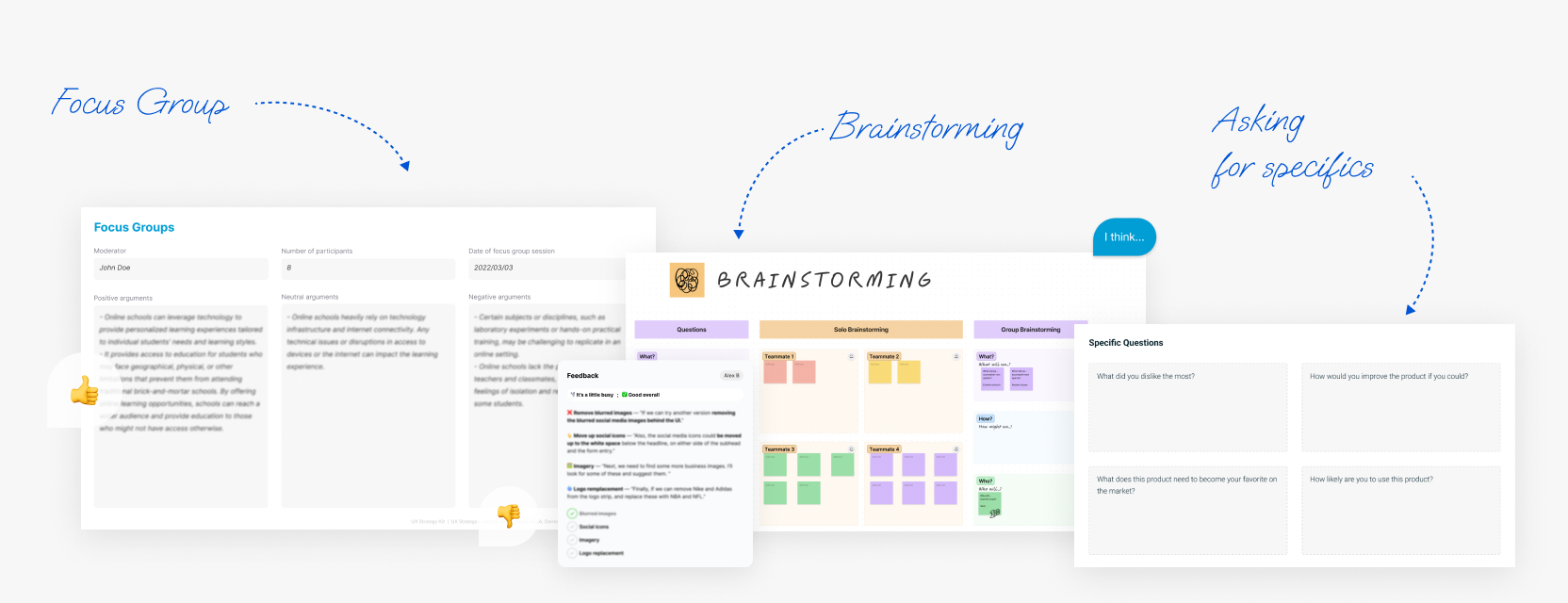If you’re developing a software product for a public release, you want to meet those expectations. That’s what gets you sales and a loyal audience. It’s incredibly hard to get everything right from the first try. That’s why gathering feedback from focus groups and then from a wider audience is vital during the software prototyping stage. It’s how you can process the largest amount of data while putting in minimum effort.
Long story short, it’s just quicker and cheaper to change a prototype than a fully developed piece of software. Besides that, prototyping has many more benefits, and we’ve covered that in a different post. But let’s focus on users and how to use their input to improve the product during prototyping.
What are the sources of feedback?
Internal discussions
The product team is the main source of ideas and inspiration. And during the planning and prototyping stage, getting feedback from multiple sources is vital. We all have different backgrounds and baggage and can view the target audience slightly differently.
Brainstorming, matched with market research, is a powerful tool that should nudge development in the right direction. Lack of research is one of the most common prototyping mistakes, and this stage requires a thorough approach. People of different skill sets can pinpoint the prototype’s strong suits or weak spots. Which in turn helps to drive innovation and create value.
Focus groups
Take a small group of people and start surveying them. The size can vary based on the product, market, and other variables. The survey will lean heavily on your needs and the information you want to get. How to improve the product, where it is lacking, how high the interest is, etc. These are only a few questions you can ask to get valuable insights. And extreme users can provide you with the broadest volume of info.
These are the customers that avidly support or oppose something. For example, if you’re planning to create an online bookstore, you might want to contact people who buy books online all the time. At the same time, it’s always great to listen to people who hate online book shopping. One of those people can help you understand how to avoid considerable risks during development and after release.
The same goes for regions. If you’re building something for an international audience, letting users from different regions use the prototype is a great idea. Cultural differences, local market rules, and a bunch of other variables may offer different results. You can later apply it to the product and be competitive across multiple locations.

How to do it right?
Be neutral
Reading those negative reviews is harsh, but this is the only way to get valuable information to help your product evolve. Focus on the cons of the software prototype too. Try to figure out the weakest part of the whole experience. Eliminating that during prototyping is a guaranteed money-saver.
Ask for specifics
Determine the goals of each feedback session. If you’re testing the UI, focus on this angle almost entirely. Approach the same things from different points of view. For example:
- What did you dislike the most?
- How would you improve the product if you could?
- What does this product need to become your favorite on the market?
- How likely are you to use this product?
And so on. After each session, evaluate the data and see if there are more things that you could ask in the future.
Iterate when needed
Software prototyping is a stage that’s highly susceptible to changes. That’s why you should apply the knowledge acquired after each feedback session. Spending a bit more time on the prototype is a reliable way to cut your development expenses in the long run.
Don’t get too attached
Often focus groups dislike the ideas which the team loves the most. It can be painful, but it’s necessary to adapt and accommodate your target audience. This is one of many pitfalls that you should expect while prototyping.
The Takeaway
Feedback only matters if you’re ready to apply it straight away. It may involve ditching the ideas you love or rethinking the concept entirely. And aligning your product with user needs and requests is a priority. This is how you create a product that generates traction and wins the hearts of your target audience.